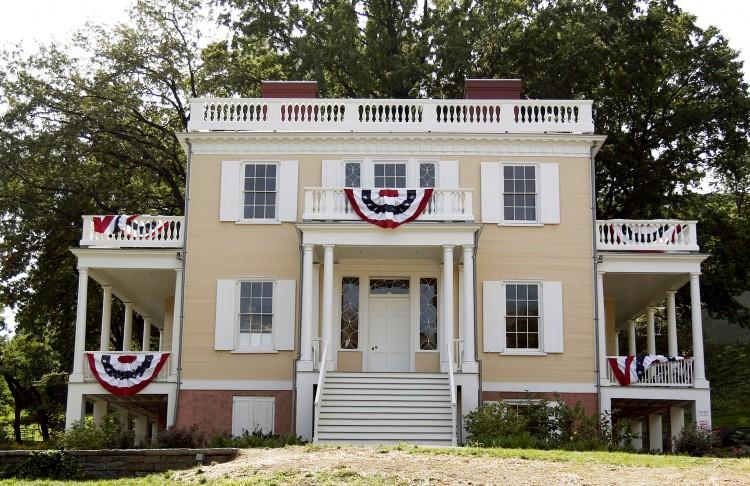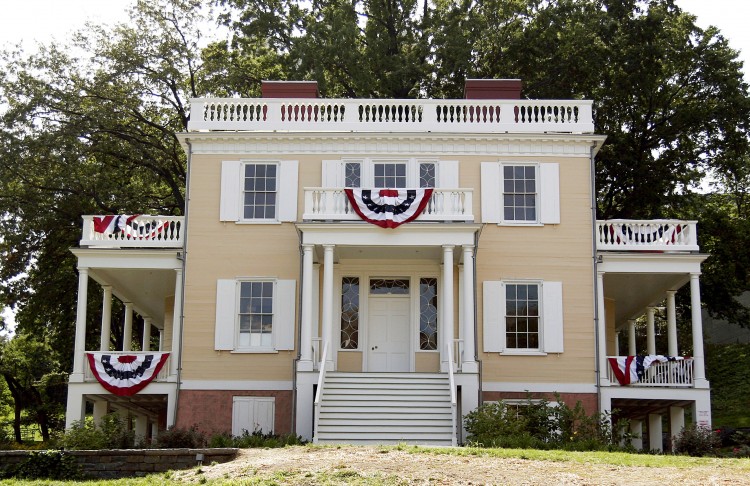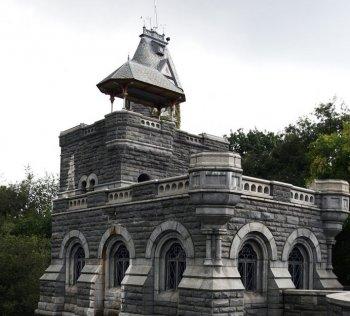Hamilton Grange
St. Nicholas Park, Hamilton Heights Harlem
Architect: John McComb Jr.
Year built: 1802
NEW YORK—Alexander Hamilton’s home, the only house he was ever known to have owned, sits in the center of Hamilton Heights in Harlem and has been relocated to its third and final location. The Federal style house was reopened with great fanfare on Saturday afternoon.
The opening ceremony, after an extensive three-year restoration, took place on Constitution Day, an apt day to reopen the doors to the home of one of America’s founders, a co-author of the Federalist Papers, and the only signer of the U.S. Constitution from New York.
[etssp 432]
In the Revolutionary War, Hamilton served first as an aide-de-camp to Gen. George Washington, as the youngest member of his staff, and was later promoted to colonel. He fought in the Battle of Harlem Heights, where he later built his home.
Following the war Hamilton contributed greatly to the development of the young nation. He served as the first U.S. secretary of the treasury. He also founded The New York Post, the Bank of New York, and the U.S. Coast Guard.
Following his service to the country Hamilton hired architect John McComb Jr. to design a home on his 32-acre estate in northern Manhattan. McComb also designed New York’s City Hall. The home was Hamilton’s “Sweet project,” as he described it in a letter to his wife, and he named it the Grange, after his grandfather’s estate in Scotland.
Hamilton’s plans to pursue his law career and enjoy his new country home with his family were cut short only two years later in 1804 when he was fatally wounded in a duel with his political adversary and then Vice President of the United States Aaron Burr. The Grange remained in Hamilton’s family for another 30 years after his death.
As upper Manhattan developed and the Grange did not conform to the grid of Harlem’s new streets it was moved a couple of blocks south in 1889. It was turned sideways, its front porch and grand entry removed, and additional modifications were made to allow it to fit into a tiny lot next to St. Luke’s Church on Convent Avenue.
The house was named a National Historic Landmark in 1960, but it remained wedged in between the church and an apartment building for another 48 years until the complicated question of finding a suitable site to relocate the house to could be resolved. In February 2008, the entire building was lifted over 10 feet into the air, so it could clear the church’s portico, and then after a month of preparations, it was rolled around the corner onto 141st Street and a half-block down on a 6 percent grade and into St. Nicholas Park, where it remains today.
After more than three years of careful restoration the Grange is once again a free standing building with period rooms, a visitor’s center, and offices for the National Parks Service that maintains the building.
On the first floor are two octagonal parlors across from each other; one is a dining room and the other a sitting room. Hamilton’s study has been restored with period furnishings and repainted with historic accuracy in a nearly chartreuse green, an interesting color choice for the first U.S. secretary of the treasury, or perhaps it reminded him of his lush birthplace in the Caribbean.
At the ceremony on Saturday were representatives from the NPS, Congressman Charles Rangel, Councilman Robert Jackson, Assemblyman Keith Wright, NYC Parks Commissioner Adrian Benepe, as well as about 18 of Hamilton’s descendants; including his seven-times great grandson Alexander Chase Hamilton who came to the ceremony from Ohio. The young boy proudly proclaimed that his great (times seven) grandfather was the man on the $10 bill.




Friends Read Free